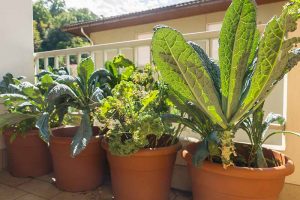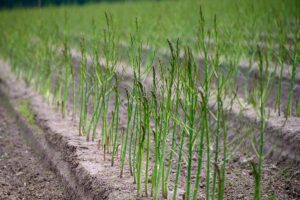Swiss chard is an attractive and tasty member of the beet family that gives us nutrient-dense leaves with sweet, earthy flavors.
A favorite of leafy green fans, this vegetable is a nutritional powerhouse that’s typically eaten fresh when the leaves are small and tender.
And fully grown, the glossy, crinkled leaves are enjoyed as a fresh wrap or lightly sauteed, steamed, or added to simmering dishes.
The pretty leaves are broad and savoyed, creating a canopy of crinkly colors from mid- to deep green, and burgundy to purple for some of the colorful varieties.
The beautiful, celery-like stalks – often brightly colored – are fully edible, with a mild taste and light crunch.

We link to vendors to help you find relevant products. If you buy from one of our links, we may earn a commission.
They add a striking vertical interest and vibrant contrast, and come in a variety of vivid colors including burgundy, mauve, orange, peach, pink, red, white, and yellow.
Plus, unlike most cool-season leafy greens, these fast-growing plants can handle most of what the summer has to throw at them in terms of heat without bolting or turning bitter.
This means you can enjoy an extra-long season of healthy, flavorful Swiss chard – from early spring right through to late fall. And the flavor even improves with a touch of frost!
To get the most from your crop, grab a comfy chair and join us. It’s time to read up on the best ways to harvest Swiss chard.
Here’s everything we’ll cover:
What You’ll Learn
Chard: A True Super Green
At the very top of the ANDI (Aggregate Nutrient Density Index) scale with a perfect score of 1,000, Swiss chard ranks as a true super green along with the likes of collard greens, kale, mustard greens, and watercress.
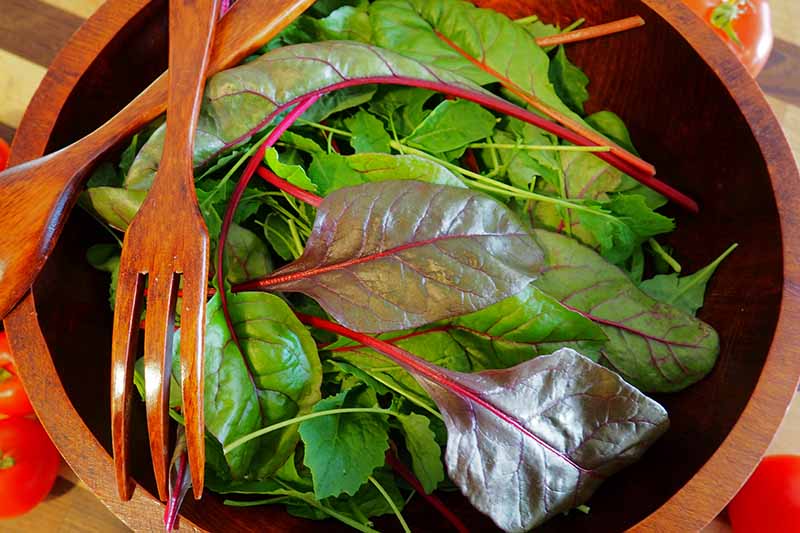
This excellent ranking is due to its rich nutritional profile, which includes high levels of antioxidants, minerals like manganese and potassium, and vitamins A, C, and K.
A biennial grown as an annual, Swiss chard, Beta vulgaris subsp. vulgaris, is a member of the beet family and is also known by other common names including leaf beet, silver beet, beet spinach, and perpetual spinach.
Easily cultivated from direct sowing or via transplanted seedlings, it reaches a mature height of eight to 24 inches. Plants can be harvested continually beginning in early spring.
A cut-and-come-again crop, new growth is developed at the core of the plant as the outer portions are removed, producing a steady supply of tasty greens.
One of the most endearing features of this super green is its tolerance of both heat and cold.
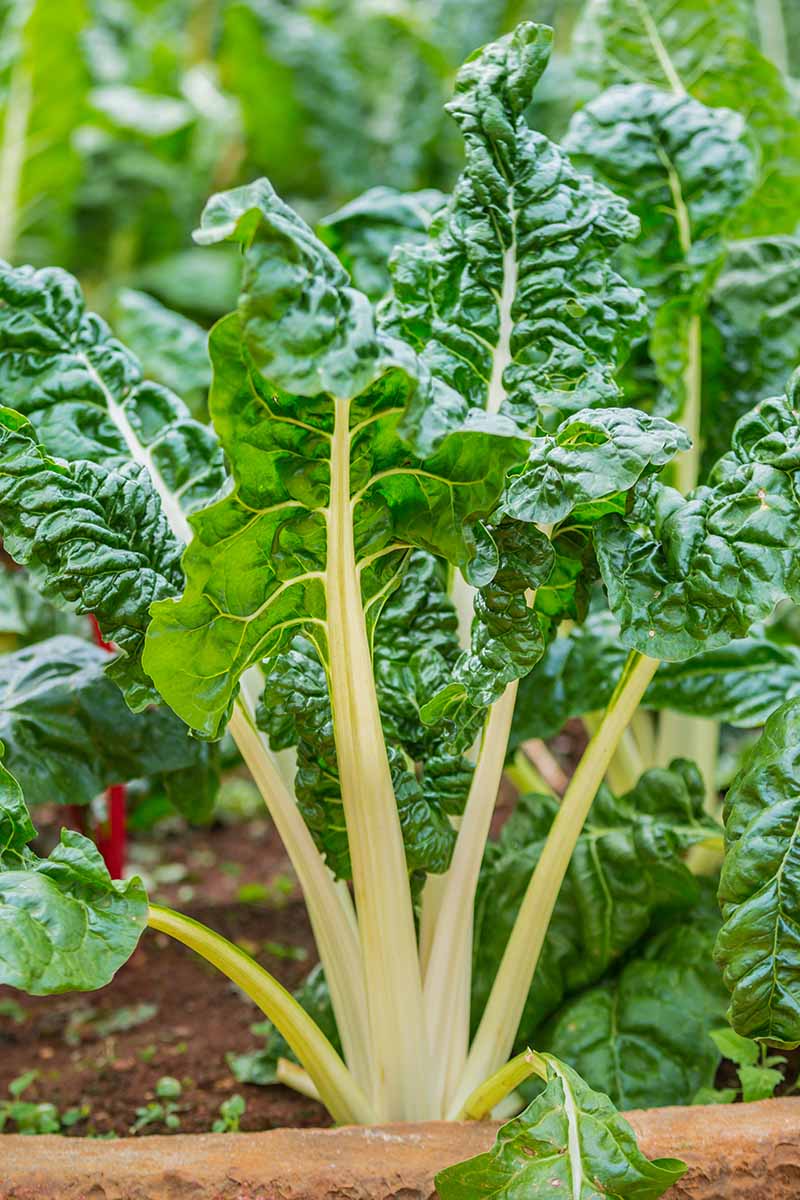
Unlike most leafy greens, it holds up well through a hot summer, and happily produces new growth even when temperatures are in the low 80s.
Above that, production can slow down but quickly resumes once the air cools.
And on the flip side, plants can withstand chilly temperatures down to 15°F! This versatility makes it a valuable crop with a very long growing season.
If your plants do bolt in hot weather, promptly cut the flower stalks close to the base, and plants will continue to develop new leaves.
For all the cultivation details you’ll need, be sure to read our guide on how to plant and grow Swiss chard.
Picking Baby Greens
Baby greens are mild and tender with no midribs. They are typically enjoyed raw in salads, sandwiches, and smoothies, or they may be added to dishes like omelets, risotto, and stir-fries.
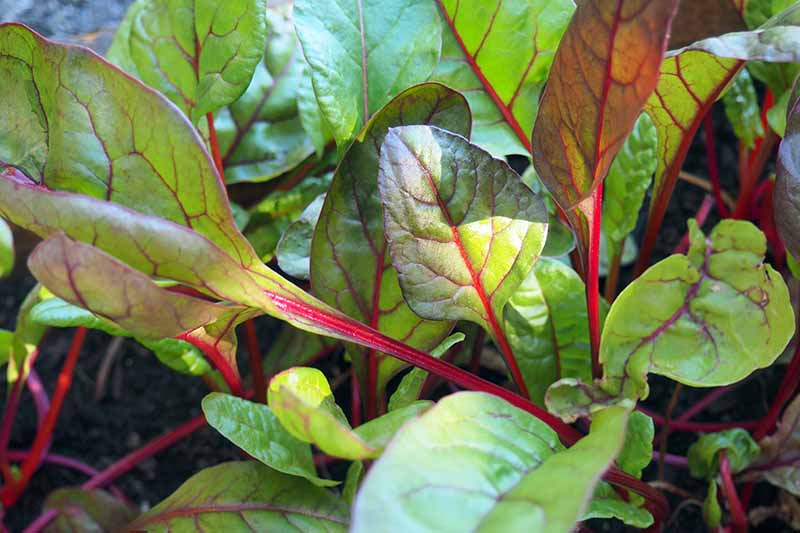
Young Swiss chard is ready for a first picking as soon as 30 days after sowing, or when the first sets of true leaves are about four inches in length.
To harvest baby greens, use a clean, sharp knife or garden scissors to cut the outer leaves about two inches above the soil.
With small plants, take care to not damage the terminal bud – the emerging foliage rosette that grows from the plant’s crown.
Regularly trimming away only the outer leaves ensures steady production of new foliage.
Harvesting Mature Leaves
The full-sized leaves of mature plants can also be used raw as a wrap, a garden-fresh alternative to a tortilla.
Or they can be chopped and steamed or lightly sauteed like spinach, and added to casseroles, pasta dishes, stir-fries, soups, and stews.
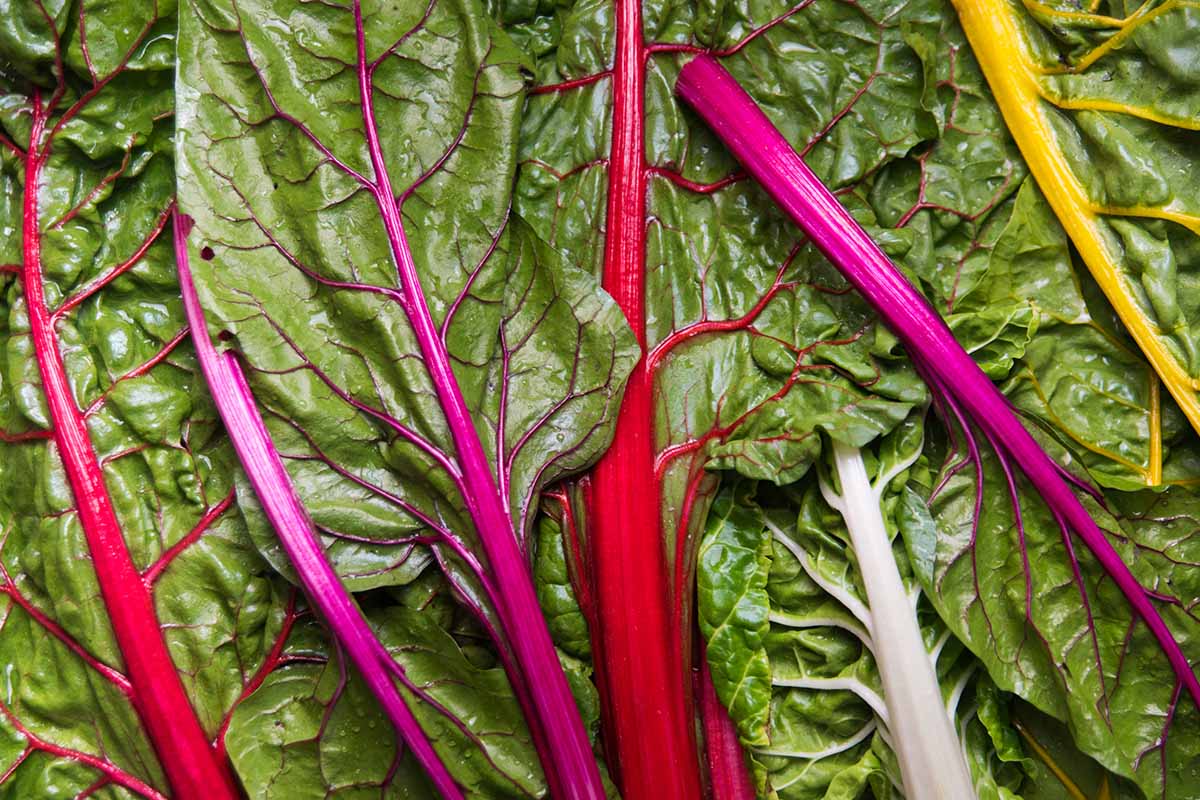
The ribs have a sweet flavor and a celery-like crunch. They can be chopped and cooked with the leaves, or trimmed out and then cooked and served like asparagus.
For full-sized leaves with a thick midrib, harvest 45 to 60 days after sowing.
To harvest, use a clean, sharp knife or garden scissors and sever steams about two inches above the soil.
Mature leaves can be harvested a few at a time or all at once. But for multiple harvests throughout the season, as explained above, the terminal bud must remain to keep producing new growth.
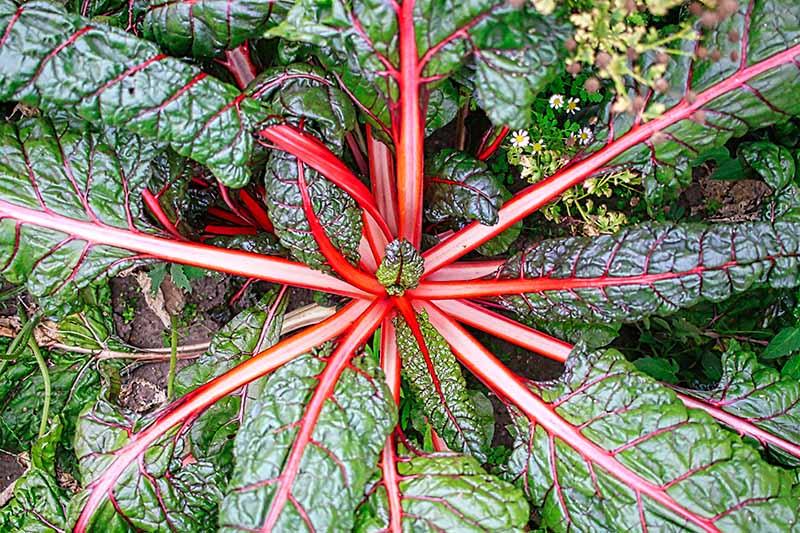
When cutting all of the mature leaves at once, leave the terminal bud in place, as well as a few inner leaves to protect the bud.
New growth emerges quickly from the crown, and picking three full crops is possible in a single growing season.
Harvest close to mealtime for the best flavor and texture.
For non-wintering plants, a final harvest can be made before freezing temperatures arrive by cutting through the crown just below the soil with a clean, sharp knife, or uprooting plants and then trimming.
Tips for Microgreens and Sprouts
Another way to enjoy the rich nutrients of Swiss chard – particularly in the winter months – is in microgreen or sprout form, which can easily be grown on a countertop near a bright window or under a grow light.

For the best nutrition, microgreens are harvested when the first pair of leaves open fully.
Plants can be reaped by cutting cleanly just above the soil with clean, sharp scissors or a knife. Or, they can be uprooted and rinsed, as all parts are edible, roots included.
‘Pink Lipstick’ seeds for growing as microgreens are available at True Leaf Market.
Storage Suggestions
Fresh chard can be stored in a perforated plastic bag in the vegetable crisper drawer of the refrigerator for up to 10 days.
Chard can also be frozen, either chopped or whole. Stored in an airtight container or bag, it can last in the freezer for up to 12 months.
Canning is another option, but because Swiss chard is a low-acid food, it must be pressure canned for safe eating.
Store properly processed and sealed jars in a cool, dark, and dry cupboard for up to 12 months, and be sure to refrigerate after opening.
Garden-Fresh Goodness
Nutritious and delicious, Swiss chard is fast-growing and hardy, shrugging off summer’s heat as well as freezing cold temperatures.
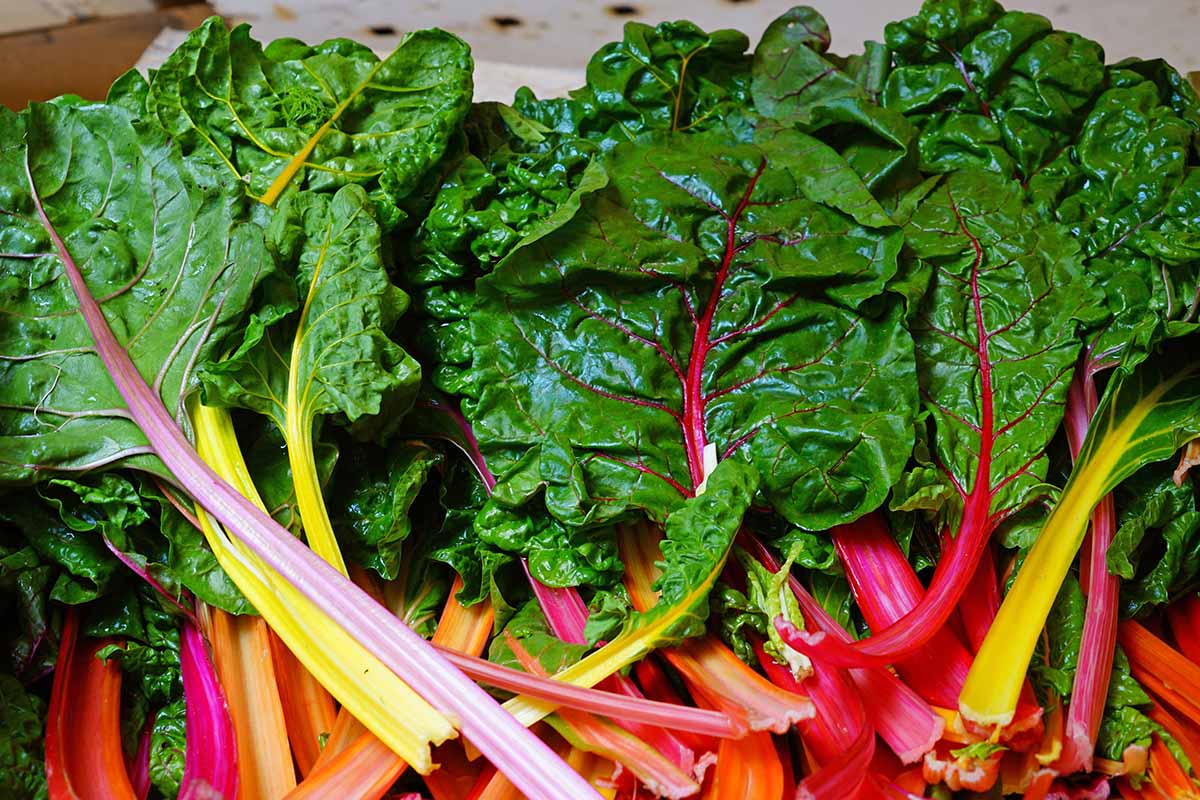
For the longest possible growing season, remember to pick only the outer foliage to enjoy a continuous supply of garden-fresh goodness from early spring into fall.
And don’t forget about microgreens or sprouts for the winter months!
Do you folks have a favorite variety of Swiss chard? Tell us about it in the comments section below.
And for more information about growing the leafy green goodness that is chard at home, be sure to read these articles next:

